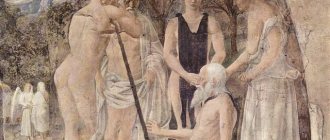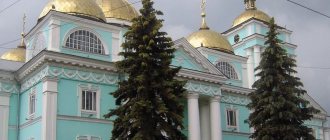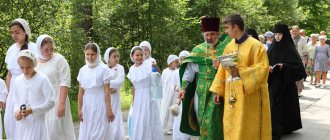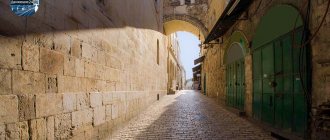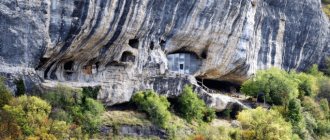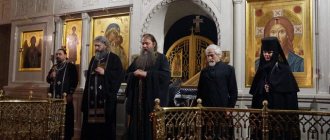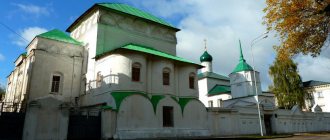Mir
Israel Jerusalem District Jerusalem Gornensky Monastery Map loading in progress...
{"format":"leaflet","minzoom":false,"maxzoom":false,"limit":50,"offset":0,"link":"all","sort":[""], "order":[],"headers":"show","mainlabel":"","intro":"","outro":"","searchlabel":"\u2026 \u0441\u043b\u0435\ u0434\u0443\u044e\u0449\u0438\u0435 \u0440\u0435\u0437\u0443\u043b\u044c\u0442\u0430\u0442\u044b","default":"","import-annotation":false,"width ":"auto","height":"350px","centre":{"text":"","title":"""link":"""lat":31.763722000000001344233169220387935638427734375,"lon": 35.1576390000000031932358979247510433197021484375,"icon":""},"title":"","label":"","icon":"","lines":[],"polygons":[],"circles":[ ],"rectangles":[],"copycoords":false,"static":false,"zoom":8,"defzoom":14,"layers":["OpenStreetMap"],"image layers":[] ,"overlays":[],"resizable":false,"fullscreen":true,"scrollwheelzoom":true,"cluster":false,"clustermaxzoom":9,"clusterzoomonclick":true,"clustermaxradius":80, "clusterspiderfy":true,"geojson":"","clicktarget":"","showtitle":true,"hidenamespace":false,"template":"","userparam":"","activeicon": "","pagelabel":false,"ajaxcoordproperty":"","ajaxquery":"","locations":[{"text":"\u003Cb\u003E\u003Ca href=\"/palomnik/%D0% 93%D0%BE%D1%80%D0%BD%D0%B5%D0%BD%D1%81%D0%BA%D0%B8%D0%B9_%D0%BC%D0%BE%D0%BD% D0%B0%D1%81%D1%82%D1%8B%D1%80%D1%8C\» title=\»\u0413\u043e\u0440\u043d\u0435\u043d\u0441\u043a\u0438\u0439\ u043c\u043e\u043d\u0430\u0441\u0442\u044b\u0440\u044c\»\u003E\u0413\u043e\u0440\u043d\u0435\u043d\u0441\u043a\u0438\u0439 \u 043c\u043e\u043d\u0430\ u0441\u0442\u044b\u0440\u044c\u003C/a\u003E\u003C/b\u003E\u003Chr /\u003E\u003Ca href=\"/palomnik/%D0%A1%D0%B2%D0%BE%D0% B9%D1%81%D1%82%D0%B2%D0%BE:%D0%90%D0%BD%D0%BD%D0%BE%D1%82%D0%B0%D1%86%D0%B8 %D1%8F\» title=\»\u0421\u0432\u043e\u0439\u0441\u0442\u0432\u043e:\u0410\u043d\u043d\u043e\u0442\u0430\u0446\u0438\u044f\»\u003E\ u0410\u043d\u043d\u043e\u0442\u0430\u0446\u0438\u044f\u003C/a\u003E: \u043f\u0440\u0430\u0432\u043e\u0441\u043b\u0430\u0432\ u043d\u044b\u0439\u0440 \u0443\u0441\u0441\u043a\u0438\u0439 \u0436\u0435\u043d\u0441\u043a\u0438\u0439 \u043c\u043e\u043d\u0430\u0441\u0442\u044b\ u0440\u044c\u0432\u0432\u0435 \u0434\u0435\u043d\u0438\u0438 \u0420\u0443\u0441\u0441\u043a\u043e\u0439 \u0414\u0443\u0445\u043e\u0432\u043d\u043e\u0439 \u041c\u0438\u0441\u0441\u0438 \u0438 \u0432 \u0418\u0435\u0440\u0443\u0441\u0430\u043b\u0438\u043c\u0435","title":"\u0413\u043e\u0440\u043d\u0435\u043d\u0441\ u043a\u0438\ u0439 \u043c\u043e\u043d\u0430\u0441\u0442\u044b\u0440\u044c","link":"","lat":31.763722000000001344233169220387935638427734375,"lon": 35.1576390000000031932358979247510433197021484375,"icon":""}]" imageLayers":[]}
31.76764; 35.162558
Israel, Jerusalem, Ein Karem
Jerusalem, Jerusalem District
Israel
Gorny
or
Gornensky Kazan Monastery
is an Orthodox Russian convent run by the Russian Spiritual Mission in Jerusalem (Russian Orthodox Church). Located in Ein Karem, 7 km. southwest of the Old City of Jerusalem.
The name Gornensky is due to the fact that it is located in an area that in Gospel times was called the nagorny (mountain) country, i.e. located on the mountains.
There are about 60 sisters in the monastery.
History[[edit]h2>
Archimandrite Anthony (Kapustin)
In 1869, the head of the Russian Spiritual Mission, Archimandrite Antonin (Kapustin), decided to buy a plot with two houses and an olive tree plantation 7 km away. southwest of the Old City of Jerusalem near the village of Ein Karem, which is traditionally considered the birthplace of John the Baptist and the Meeting of the Virgin Mary with the righteous Elizabeth (Luke 1:39-56). The owner of the plot, former dragoman of the French consulate in Jerusalem, Hanna Jelyad, asked for 4,000 Napoleons (80 thousand francs or about 25 thousand silver rubles) for it. A special committee was created in Russia to collect this amount.
Immediately after the purchase of the site in 1871, individual nuns and pilgrims settled on it. The first monastery church was consecrated on February 14, 1883 in honor of the Kazan Icon of the Mother of God. Today this is the main temple of the monastery; the miraculous Kazan Icon of the Mother of God is kept in it. To the right of the entrance to the Kazan Church there is a moved shrine - the stone on which, according to legend, John the Baptist preached. This stone was brought to the monastery from the outskirts of Jerusalem, not far from the so-called “desert” of St. John the Baptist, near the modern village of Even-Sapir.
The community of nuns received the status of a monastery from the Holy Synod in 1898, and in 1903, icon-painting and gold-embroidery workshops were opened in the monastery, from which the monastery fed itself.
In 1910, construction began on the cathedral, which was supposed to be consecrated in honor of the Holy Trinity. It stopped due to the outbreak of the First World War.
By 1914, there were about 200 nuns in the monastery, who, at the request of the Ottoman authorities, had to leave the monastery and move to Alexandria, from where they returned in 1918 to a thoroughly damaged monastery. However, through the efforts of the sisters, it was restored.
Due to the impossibility of communication with the Moscow Patriarchate, the monastery, like the entire Russian spiritual mission, became subordinate to the Russian Orthodox Church Outside of Russia in 1920. In 1924, the Gornensky community again received the canonical status of a monastery.
Many of the nuns who came to the monastery during these years were Russian emigrant nuns who fled to Bessarabia, from there to Serbia, and then to the Holy Land. Only a few novices were Arab women.
In 1945, after the visit of His Holiness Patriarch Alexy I to the Holy Land, a division arose among the sisters of the monastery on the issue of jurisdiction; most supporters of the transition to the jurisdiction of the Moscow Patriarchate appeared. Then the Patriarchate of Jerusalem placed the Greek temple in Ein Karem at the disposal of these sisters.
During the Arab-Israeli War, when the bombing of Ein Karem began in July 1948, the sisters left the monastery and fled to the Jordanian part of Palestine.
After the formation of the State of Israel in 1948, the monastery (as well as the buildings of the Russian Ecclesiastical Mission) was transferred by the Israeli authorities to the Moscow Patriarchate. The nuns, who did not want to return to the jurisdiction of the Moscow Patriarchate, moved to England, where they founded the Annunciation Monastery in London. Five nuns moved to Chile, where in 1958 the Assumption Monastery was founded by Archbishop Leonty.
From the mid-1950s, the monastery began to be replenished with nuns coming from the USSR. It continued to remain one of the operating monasteries of the Russian Orthodox Church throughout the subsequent history of the USSR, being the only convent of the Moscow Patriarchate outside the Soviet borders.
In 1987, the cave temple was consecrated in honor of St. John the Baptist.
In 1997, construction of the cathedral in honor of the Holy Trinity was resumed and completed in 2007 for the 160th anniversary of the monastery. On October 28, 2007, the temple was consecrated with a small rite in honor of All Saints who have shone in the Russian land, and on November 12, 2012, Patriarch Kirill of Moscow performed the great consecration of this temple.
Shrines
Thousands of pilgrims come to Muscovy every year to venerate the miraculous copy of the Kazan Icon of the Mother of God.
Kazan Icon of the Mother of God - the main shrine of the monastery
According to legend, the stone located on the right side of the entrance to the Kazan Church is the same stone from which the prophet John the Baptist once preached.
Every pilgrim dreams of touching the pillar left from the house of the righteous parents John, Zechariah and Elizabeth.
Temples[[edit]h2>- Cathedral of All Saints who shone forth in the Russian Land
- Church of the Kazan Icon of the Mother of God
- Church of John the Baptist
Cathedral of All Saints, who shone in the Russian land
. In 1910, a spacious church in the name of the Life-Giving Trinity was founded in the monastery. However, the temple was not completed then due to the outbreak of World War I in 1914, when RDM employees were forced to leave Jerusalem and go to Cairo. The cathedral stood unfinished for almost 90 years. Only in 1997, when the 150th anniversary of the RDM was celebrated, Patriarch Alexy II visited the monastery, and a blessing was received for the completion of the temple. To date, construction work has almost been completed. The temple was consecrated in the name of All Saints who shone in the Russian land.
Church of the Kazan Icon of the Mother of God
built between 1880 and 1881.
Cave Church of John the Baptist
built no later than 1987.
Famine and plague struck the monastery, but the Kazan Mother of God saved the sisters
Even before the revolution, in 1910, one temple was not enough to accommodate believers. Therefore, the construction of the Cathedral of the Life-Giving Trinity began. This time there was already enough territory, so it was possible to choose the most appropriate place.
And one was found. They began to build the cathedral on a hill so that it could be seen from different parts of the city.
But such an initiative was not financially feasible for the monastery. Very quickly the cash reserves were exhausted. This was also influenced by the fact that the number of nuns increased. The nuns had to earn extra money in order to somehow provide themselves with food.
12 akathists
Sisters read the icon of the Kazan Mother of God on the patronal feast day
But the problems weren't over. A plague epidemic broke out in the monastery, from which eight nuns died. The survivors decided to turn to higher powers for help. We began to read the akathist to the Kazan Mother of God.
Suddenly the icon came down from the wall and began to walk around the temple. A voice rang out. He assured that from now on all disasters will stop, and there is no need to worry about the epidemic.
And so it happened. And a new tradition appeared in the monastery - to read the akathist to the Kazan Icon of God twelve times on the patronal feast day.
Patronal holidays[[edit]h2>
Special holiday of the monastery
At the request of Archimandrite Antonin (Kapustin), the Holy Synod of the Russian Orthodox Church, by decree of August 5, 1883, blessed the celebration of the holiday in the Gornensky Monastery - “Kissing of Mariino, or the Coming of the Mother of God to the Gorny City of Judah”
, usually performed on April 12 (March 30 according to the old style). This is due to the fact that the monastery is located a few tens of meters from the place where, according to legend, the Meeting of the Virgin Mary with Righteous Elizabeth took place (the Franciscan Church of the Visitation is currently located on that site).
Since then, on the eve of the Feast of the Kissing, the icon of the Annunciation of the Blessed Virgin Mary is transported from the Holy Trinity Cathedral in Jerusalem to the Gornensky Monastery, where it remains for three months until the Feast of the Nativity of John the Baptist on July 7 (June 24, O.S.), because The Mother of God was here with Elizabeth for 3 months. This icon is placed on the abbot's place in a blue robe like a monastic robe, placing the abbot's staff next to it. During these three months, the Most Holy Theotokos herself is the abbess of the monastery.
There is no such celebration in the general church calendar of the Russian Orthodox Church.
Abbesses
Big sisters
- Rachel (1898)
- Valentina (1898 - 1918)
- Tabitha (Minina) (1918 - 1924)
Mother Superiors
- Tabitha (Minina) (1924 - 1945)
- Elisaveta (Annenkova) (1945 - ?)
- Antonina (Grishko) (1945 - ?)
- Afanasia (Lysenkova) (1950 - 1955)
- Mikhail (Korchagin) (1956 - 1960)
- Tabitha (Dmitruk) (1960 - April 19, 1967)
- Sophronia (Rebriy) (April 19, 1967 - December 28, 1982)
- Feodora (Pylipchuk) (November 23, 1983 - 1986)
- Ekaterina (Sorokina), acting dean
- Elena (Loshkareva), acting dean
- Gabriela (Glukhova) (1989 - 1990), acting dean
Where to stay[[edit]h2>- Pilgrimage houses of the Gornensky Monastery
Pilgrims arriving at the Gornensky Monastery are accommodated in small pilgrimage houses located on the territory of the monastery. Currently, the Gornensky Monastery has 4 pilgrim houses, with a capacity of 10 to 22 people. Settlement in the pilgrimage houses of the Gornensky convent in Jerusalem is carried out through the Pilgrimage Service of the Russian Spiritual Mission.
The pilgrim houses have a kitchen where pilgrims can prepare tea (pilgrims eat in the monastery refectory); shower and toilet are on the floor.
Address:
Israel, Jerusalem, Ein Karem
Directions:
A pilgrim going to the Gornensky Monastery only needs to have a foreign passport and an air ticket for a flight to Ben Gurion Airport. From there, buses, trains and taxis go to Jerusalem; the journey takes about an hour. From the center of Jerusalem (Old City) the monastery in Gorny can be reached by bus routes 19 and 27 (stop “Hadassah Hospital”).
How to visit?
To visit the monastery you need to make a pilgrimage to Jerusalem.
Travel documents:
- 1. foreign passport valid for at least six months from the date of travel;
- 2. for those wishing to work in the monastery, a visa is required, for ordinary pilgrims and tourists it is not required;
- 3. Round-trip tickets with “closed” dates;
- 4. Medical insurance for the duration of your stay in the country;
- 5. Hotel reservation or invitation;
- 6. Confirmation of solvency.
A trip to Jerusalem and a visit to holy places for every Christian requires special preparation. And this is not preparing documents, booking hotels or selecting flights. Before a pilgrimage to the Holy Land, it is advisable to renounce earthly worries, confess, and tune in to the perception of the greatest shrines of the Christian world.
In order for the pilgrimage trip to become a true event of the spirit for you, such undoubtedly important, but earthly issues as the organization of transfer, accommodation, meals, and excursion program will be taken care of by Tobiah’s service. With the blessing of the Church of the Nativity of the Blessed Virgin Mary, our pilgrimage center helps to make Orthodox tours to the most important shrines of Russia and the world. Orthodox tour guides will help you understand the spirit and meaning of true Christian pilgrimage, and our experience in organizing trips will make each tour safe and comfortable.
To main
Background
According to the testimony of contemporaries, the Gornensky Monastery appeared thanks to the tireless labors of the ascetic Archimandrite Antonin (Kapustin).
In the fall of 1869, he hosted one of the members of the State Council of the Russian Empire and the then famous politician P. P. Melnikov. During a walk around the outskirts of Jerusalem, the archimandrite showed the guest a plot of land where the Gornenskaya monastery is located today, and asked for help in acquiring it for the Orthodox mission from the former French dragoman Khan Carlo Gelliada.
P. P. Melnikov organized a committee to raise funds required by Father Antonin to equip the monastery. Large Moscow manufacturers Putilov and Polyakov, the Eliseev brothers, famous philanthropists, as well as many ordinary Russians made generous donations to the charitable cause.
But raising funds was not the only concern of Archimandrite Antonin, since the village of Ein Karem attracted the attention of the missionary Ratibson, thanks to whom Catholics began to acquire plots of land there, built a chapel, a school and a Magnificant monastery. Their representatives also began to negotiate with Jelyad, but he was inclined to sell his property to Father Antonin.
In February 1871, after much ordeal, a deed of sale was finally issued for a dragoman plot with two houses and a garden for 55,000 francs. However, the story did not end there, as a few days later Jelyad died as a result of poisoning. The murder was never solved, although many considered it the revenge of Catholic fanatics.
Gornensky Monastery: history of foundation
Immediately after the plot of land came into the possession of the Russian Orthodox Church, a shelter for pilgrims was built there. After some time, several nuns settled in it. Then Archimandrite Antonin decided to found an unusual Orthodox women's monastery. According to the charter he wrote, only nuns could live in it, who were able to build a house on its territory at their own expense and plant a garden around it. So, instead of the usual buildings with cells, a small women’s village appeared, immersed in the greenery of olive, almond and citrus trees.
In 1898, the Holy Synod awarded the local community the status of a monastery.
Five years later, gold embroidery and icon painting workshops began operating on its territory. Thanks to them, the Gornensky Monastery in Jerusalem no longer needed external funding.
Construction of the first temple
At first, in the summer, services were held in a specially equipped tent, and in the winter - in a 2-story mission house. Later, Archimandrite Antonin chose the site for the temple and himself drew up the architectural plan. According to this project, during the construction seasons of 1880-1881, the Arab contractor Jiries built the church and received 300 Napoleons for the work. In addition, he was paid 30 French gold coins for the construction of a free-standing bell tower. In 1883, the temple was consecrated in honor of the Kazan Icon of the Mother of God.
Workers
In recent years, more and more people want to devote some period of their lives to serving the Lord. For this purpose, they go to monasteries, where they strive to find answers to their questions regarding the salvation of the soul and the meaning of man’s stay on earth.
In particular, religious women and girls can become laborers of the Gornensky Monastery for up to three months. To do this, they must obtain a tourist visa to Israel, as well as a blessing and recommendation from the priest from the temple they usually visit.
Monastic way of life
All nuns who have chosen the Gornensky Monastery (Ein Karem) as their place of service have their own obediences. Their day is scheduled by the hour:
- from 5:30 to 9:00 morning service is held in the monastery;
- from 9:00 to 9:30 - breakfast in the refectory;
- from 9:30 to 12:30 - time for obedience, during which the nuns perform tasks assigned to them by the dean sister;
- from 12:30 to 13:00 - lunch;
- from 13:00 to 15:00 - obedience;
- from 15:00 to 18:00 - evening service;
- from 18:00 to 21:00 - obedience.
Ein Karem
The area where the Gornenskaya monastery is located is located in the southwestern part of Jerusalem. Translated into Russian from Hebrew, its name is translated as “Source of Grapes.” According to biblical tradition, it was there that the Virgin Mary came to her relative Saint Elizabeth after she learned that she was destined to become the mother of the son of God. In addition, John the Baptist was born in Ein Karem, who was the son of the priest Zechariah. While still in the womb of his mother Saint Elizabeth, he jumped at the approach of the Mother of God, thereby announcing that the Savior was soon to be born.
SOURCES
- https://www.pravoslavie.ru/41336.html – Monastery of the Holy Cross in Jerusalem. Part 1. Vasilios Tzaferis. 04/06/2007
- https://www.pravoslavie.ru/41337.html – Monastery of the Holy Cross in Jerusalem. Part 2. Vasilios Tzaferis. 04/06/2007
- https://tonkosti.ru/%D0%9C%D0%BE%D0%BD%D0%B0%D1%81%D1%82%D1%8B%D1%80%D1%8C_%D0%A1%D0 %B2%D1%8F%D1%82%D0%BE%D0%B3%D0%BE_%D0%9A%D1%80%D0%B5%D1%81%D1%82%D0%B0_%D0%B2_ %D0%98%D0%B5%D1%80%D1%83%D1%81%D0%B0%D0%BB%D0%B8%D0%BC%D0%B5 – Monastery of the Holy Cross in Jerusalem (Israel) – description, history, location. Exact address and website. Tourist reviews, photos and videos
- https://biblewalks.com/sites/CrossMonastery.html – Monasteryofthe Cross
- Orthodox monasteries. Travel to holy places. Monastery of the Holy Cross (Jerusalem). No. 67, 2010. Weekly publication. LLC "De Agostini", Moscow
- https://www.balandin.net/FifthGospel/Gospelhtm -Sergey Balandin. "THE FIFTH GOSPEL". DESCRIPTION OF THE HOLY PLACES IN ISRAEL WITH COMMENTS AND REFLECTIONS.
- https://orthpedia.de/index.php/Serapion_von_%C3%84gypten
- https://en.jerusalem-patriarchate.info/holy-pilgrimage-sites/the-holy-monastery-of-the-sacred-cross/
- https://www.pravenc.ru/text/168205.html
- https://ru.wikipedia.org/wiki/%D0%9C%D0%BE%D0%BD%D0%B0%D1%81%D1%82%D1%8B%D1%80%D1%8C_%D0 %A1%D0%B2%D1%8F%D1%82%D0%BE%D0%B3%D0%BE_%D0%9A%D1%80%D0%B5%D1%81%D1%82%D0%B0_ (%D0%98%D0%B5%D1%80%D1%83%D1%81%D0%B0%D0%BB%D0%B8%D0%BC)
